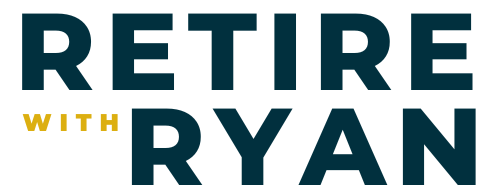4 Strategies to Avoid Tax Tsunami When Working Beyond 73 Years Old, #248
As you get closer to the age of 73, it's more and more important to understand the financial strategies you can use to avoid a "tax tsunami" or "tax bomb."
In this episode, I break down the basics of RMDs, explaining how they are calculated and the importance of planning ahead. You’ll want to make a note of these four key strategies to reduce your RMDs and ensure a smoother financial journey as you transition into retirement.
From starting withdrawals before the age threshold to considering Roth conversions and qualified charitable distributions, we share practical insights to help you navigate these financial waters.
You will want to hear this episode if you are interested in...
(0:00) How to avoid a huge tax burden if you plan to work beyond 73 years of age
(2:21) Please rate and review the Retire with Ryan podcast!
(3:59) RMDs start at age 73 unless working past that age with less than 10% company ownership
(9:02) Plan your IRA distributions considering tax implications
(11:52) Consider a Roth conversion by moving pre-tax retirement funds to a Roth IRA
(17:54) Use annuities for stable retirement income
(18:59) Investigate using a QLAC to reduce RMDs, manage taxes, and provide additional income in old age
The Basics of Required Minimum Distributions
The IRS mandates withdrawals starting at age 73 for people with savings in traditional IRAs or employer-sponsored retirement plans. If you fail to strategically plan for these distributions, you might be hit with a "tax tsunami."
By federal law, when you own non-Roth retirement accounts and reach age 73, you're required to withdraw a minimum amount annually, adding that sum to your taxable income. The amount you must withdraw is calculated using your account balance as of the previous year-end and IRS-provided life expectancy tables.
Each type of account has specific withdrawal rules, and although you can aggregate IRAs for distribution purposes, employer-sponsored plans like 401(k)s must be treated individually. Failure to meet the withdrawal requirement can trigger a hefty 25% penalty.
Strategy 1: Begin Withdrawals Before 73
Once you reach 59 and a half, you can take IRA distributions without penalties, so starting your withdrawals before the mandated age makes sense for early retirees who need extra income or those with substantial IRAs predicting significant RMDs. Early withdrawals can mitigate a future compounded tax burden when RMDs begin in full force at age 73.
Strategy 2: Execute Roth Conversions
Roth conversions are a great strategy to mitigate future RMD impacts, and by converting traditional IRA funds to a Roth IRA, you’ll only pay taxes on the converted amount at today’s tax rates. Once in a Roth, funds grow tax-free, and withdrawals remain tax-free, so this strategy is a good choice for people who can afford to pay the conversion taxes with non-retirement funds, allowing the maximum amount to compound benefit from tax-free growth over time.
Strategy 3: Make Qualified Charitable Distributions (QCDs)
For retirees with philanthropic interests, a Qualified Charitable Distribution (QCD) allows direct donations from an IRA to a charity, satisfying RMD requirements while excluding the distributed amount from taxable income. Starting at age 70 and a half, you can transfer up to $100,000 annually, fulfilling RMD mandates and supporting your chosen causes without impacting your taxable income. This strategy has a huge advantage for people who typically cannot itemize deductions and, therefore, receive no tax benefit from charitable contributions.
Strategy 4: Use Qualified Longevity Annuity Contracts (QLACs)
A QLAC is a deferred income annuity that begins payments at a later age, commonly 85. Up to $200,000 can be used from your IRA to purchase a QLAC, which is shielded from RMD calculations until distributions begin. This approach is a way to reduce your taxable withdrawals in the years leading up to 85 and provide a future income stream.
Taking Charge of Your RMD Strategy
You could think about combining these strategies to reduce your tax load during retirement, but it’s important to understand your particular financial situation and work with a financial advisor to navigate the ins and outs of your personal situation. Thoughtful planning can ease the transition into required distributions and help maintain a tax-efficient, comfortable retirement. Whether it’s starting early, converting to Roth, donating to charity, or using a QLAC, these four potential strategies offer ways to manage your taxes and improve your financial security in retirement.
Resources Mentioned
Subscribe to the Retire with Ryan YouTube Channel
